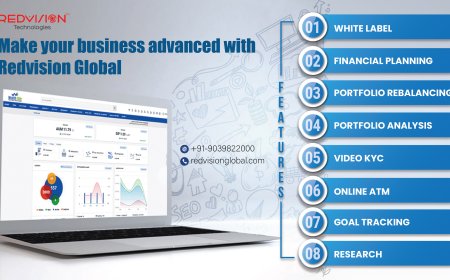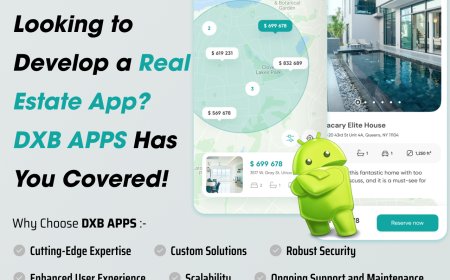The Future of Web Design
Explore the future of web design, highlighting trends like AI, responsive layouts, accessibility, and immersive user experiences for 2025.

Introduction
Web design has come a long way from the days of blinking text, animated GIFs, and cluttered layouts. Today, websites are expected to be fast, intuitive, and beautiful. But as technology, user behavior, and expectations continue to evolve, so does web design. This article explores where web designing course in Chandigarh is heading, what trends are emerging, and which foundational principles remain timeless. Whether youre planning a new website or refreshing an old one, understanding the future of web design helps you stay ahead without losing sight of what truly matters.
Why Web Design Needs to Evolve?
Before diving into the future, it helps to understand why web design keeps changing.
1. User Expectations Are Higher
Visitors now expect a website to load quickly, work on all devices, and feel easy to use. Slow or confusing sites often lead to immediate exits.
2. Technology Moves Fast
New screen sizes, design languages, and browser capabilities influence how we design. What worked well five years ago might look outdated or perform poorly today.
3. Content Consumption Has Shifted
People scroll more than they click. Mobile browsing has overtaken desktop use. Design must adapt to how people interact with content.
Whats Changing in Web Design?
Lets take a look at the key design trends and shifts shaping the future of websites.
1. Personalization and User-First Design
Design is no longer just about visuals. It's about how users feel and interact with a website.
-
Problem: Generic websites can feel cold and impersonal.
-
Solution: Personalized experienceslike showing relevant content or greeting returning visitorscreate deeper engagement.
Real-life example: A clothing website might recommend products based on browsing history. It feels more useful than showing the same homepage to everyone.
Opposing view: Some worry that too much personalization invades privacy. Balancing usefulness and respect for user data is critical.
2. More Focus on Accessibility
In the past, accessibility was often an afterthought. Thats changing.
-
Whats new: Designers now prioritize making websites usable for people with visual, hearing, or physical impairments.
-
Why it matters: Its not just about being inclusiveits about reaching a wider audience and improving usability for everyone.
Best practice: Use high-contrast colors, readable fonts, and clear keyboard navigation.
3. Motion and Micro-Interactions
Todays websites are more interactive. Subtle animationslike buttons that change color or icons that movegive feedback and make sites feel alive.
-
The benefit: Micro-interactions guide users without overwhelming them.
-
The risk: Too much animation can slow a site or annoy users.
Rule of thumb: Animation should enhance, not distract.
4. Voice and Visual Search Compatibility
With smart speakers and voice assistants becoming common, people are starting to search in new ways.
-
Trend: Websites are adapting by using conversational content and structured data so they can appear in voice search results.
-
Visual search is also rising, especially in retail, where users can search by uploading a photo instead of typing a keyword.
Implication: Future-ready websites should be designed not just for the eyebut for the ear and camera too.
5. Sustainability in Web Design
Yes, even websites can have a carbon footprint. Large images, heavy videos, and bloated code use more energy to load.
-
New focus: Designers are streamlining sites to be faster, lighter, and more energy-efficient.
-
Why its growing: As users become more eco-conscious, sustainable design may influence brand perception.
Simple solution: Compress images, reduce unnecessary scripts, and use clean design.
Whats Staying the Same?
Despite all the changes, some web design principles remain constantand for good reason.
1. Mobile-First Design
Designing for mobile is no longer optional. Since most web traffic now comes from smartphones, mobile-first remains essential.
What it means: Design starts with the smallest screen and expands upward. This approach forces clarity, simplicity, and speed.
2. Clear Navigation
No matter how modern your site looks, users still need to find their way around easily.
-
Stick with: Simple menus, logical structure, and clear call-to-action buttons.
-
Avoid: Overcomplicating the navigation just to look different.
3. Fast Load Times
Speed has always matteredand still does.
-
Cause of slow sites: Unoptimized images, third-party scripts, and poor hosting.
-
Impact: Slow load times frustrate users and hurt your visibility in search engines.
Pro tip: Test your site regularly and aim to load within 23 seconds.
4. Content is Still King
Trends come and go, but valuable content always matters. A beautiful design can only do so much if the content isnt clear, helpful, or relevant.
-
Keep it simple: Use plain language, answer real questions, and organize content with headings and spacing.
-
Remember: The goal isnt to impressits to communicate.
Conclusion: Design with People in Mind
The future of web design is both exciting and practical. Yes, technology is changing, and yes, design trends will continue to evolve. But at the core of it all is a single truth: great web design is about people. Whether you're embracing new design methods or sticking with tried-and-true practices, always ask:
Does this help my visitor? Because in the end, the most future-proof websites are the ones that serve their audience best.


































